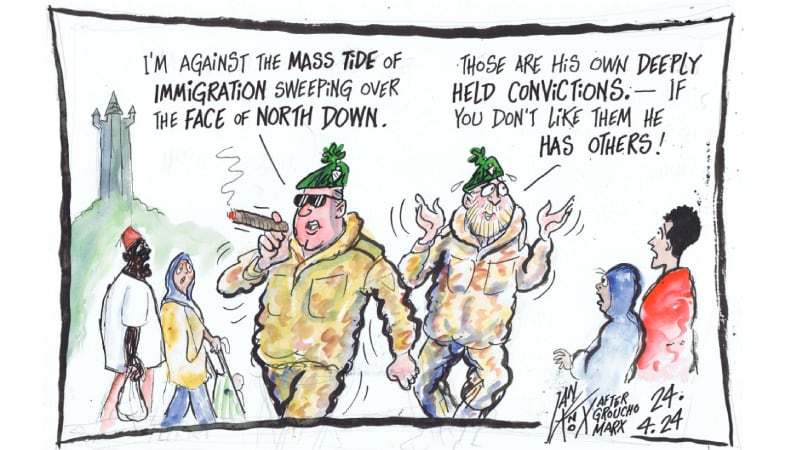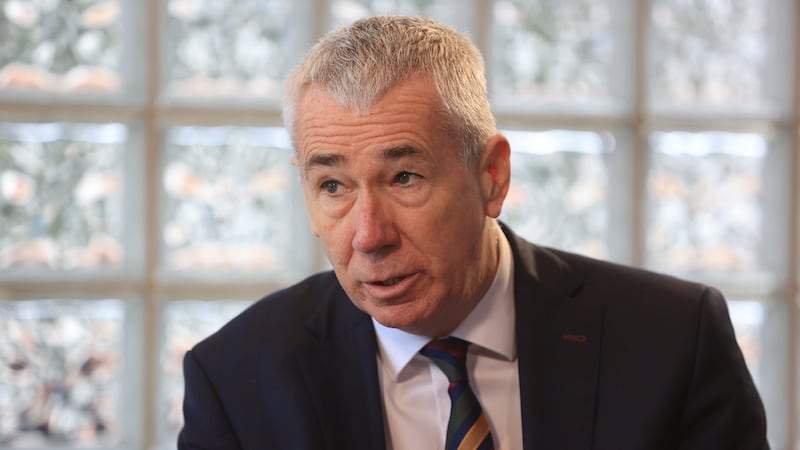On the 20th anniversary of its signing, the Good Friday Agreement (GFA) is under attack from various quarters. Brexit threatens its very foundations. Political unionism, as it has done from the time the agreement was completed, seeks to undermine it at every possible opportunity. Some others, well intentioned but, I suggest, very mistaken, suggest that the requirement for cross- community support embodied in the ‘weighted majority’ provision of the agreement should be abandoned so as to restore ‘normal politics’ in the north.
Clearly the agreement has not delivered what it promised. At its heart was the recognition that there are two fundamentally different political identities in the north; one nationalist/republican wishes to see the partition of the country in 1920 reversed and replaced by a united and secular 32-county republic; the other unionists who see their future as continuing to be linked to England.
The GFA specifically recognised the existence of these two blocs. In its provisions it sought to provide a framework in which nationalists/republicans and unionists could co-exist peacefully within the existing six-county state until a majority of its people decided that a united Ireland should be re-created.
In the meantime, the two communities were to be accorded ‘parity of esteem’, their separate political ‘identities’ treated equally. Certain defined and major consequences should have followed from this commitment to parity of esteem given in the agreement by the British government. Among these consequences was that no longer should symbols of the British state, including in particular the Union flag, have been given the exclusive priority over Irish nationalism they had enjoyed in the northern state since partition.
That commitment to equal status between nationalism/republicanism and unionism and to faithful implementation by the British government of the obligations flowing from it were of the essence of the parity of esteem provision and of the overall compromise embodied in it.
The British government has openly reneged on the promise of parity of esteem between nationalists/republicans and unionists. At every step of the way since the signing of the GFA it has continued to try to relegate the Irish identity to a position of inferiority. The Union flag is flaunted on government buildings, ignoring the rights of the now almost equal in numbers nationalist population. The demands of political unionism continue to be given preference, including in relation to the provision of an Irish language act which the British government had committed to in the St Andrews Agreement 12 years ago.
Like all agreements, the GFA is only as good as the intentions and behaviour of the parties to it.
Like other agreements, it requires for its effectiveness that there should be sanctions against those who breach it. That has been the critical weakness which has left the GFA in the perilous state it now finds itself in. Bad faith on the part of unionist parties who always opposed the agreement and also on the part of a British government which has itself both broken the agreement and refused to sanction unionists for their breaches. As co-guarantor of the GFA, successive Irish governments cannot escape their share of the blame either.
The GFA deserves to survive.
If honoured, both to the letter and in spirit, it provides the pathway to peace and reconciliation among the people of Ireland.
The question is, who of us is prepared to do that?
PATRICK FAHY
Omagh, Co Tyrone
In DUP’s case silence is not golden but our eyes still see
‘Silence is golden, but my eyes still see’
Such is the refrain popularised by the 1960s band The Tremeloes, albeit on the back of the original version of the song by the Four Seasons in 1964. Some of us can even remember that far back. I was reminded of the song recently when I was pondering how come the DUP Brexiteers were so quiet, relaxed even, when on March 19 Michel Barnier and David Davis jointly announced outline agreement on the Brexit transition arrangement.
Now, instead of falling straight off a cliff edge next March, the UK can gradually slide into the sea, not even getting its feet wet until December 2020. And, of course, the draft agreement contains the now infamous ‘backstop’ on the Irish border – Option 3 as it is known. Unless and until someone comes up with something better than north/south regulatory alignment, then the backstop applies. This is the same backstop by the way that the UK signed up to last December and which Mrs May promptly rubbished a few weeks ago when the EU dared to put it into draft legal text. Now we’re told the UK only agreed to a backstop, just not the one they agreed to last year. In that case, what kind of backstop do they envisage then? I know. We should ask the DUP because they must surely have the answer, given their near prone reaction to the inclusion of Option 3 in the transition deal.
Does the DUP know something the rest of us don’t? They support the Tory hard Brexit line by enthusiastically embracing the leaving of the customs union and the single market, yet they claim to be in favour of a soft border. Really? Maybe they could tell us how to bring that about. Ian Paisley jnr doesn’t seem to want one when he tweets: “We’re warning the Irish Republic, don’t get in our way in trying to force us to have a different type of Brexit to the rest of the UK” (March 23). Get in whose way? Not Northern Ireland’s way surely because we voted by a sizeable majority to remain in the EU. Oh, he must mean the DUP’s way then. I wonder by what right he deigns to threaten a sovereign state that is intent only on looking after the best economic interests of its people and safeguarding the GFA for the preservation of peace here?
In truth, by action if not by word, the DUP would love to see a hard border again. In their case, silence is not golden, but our eyes still see.
EO CASSIDY
Omagh, Co Tyrone
Educational injustice
In Mary McDonald’s letter (March 29) one can feel her pain at the injustice of her educational experience. My Catholic educational experience was something similar. I started school aged five in early 1955. I could read before I was six. By the time I was seven I was reading books ahead of everyone in my class. When I was eight I was taken into the headmaster’s room to help 14 and 15-year-old pupils with a math’s problem. Despite such a promising start I don’t have a single educational qualification of any kind. Why is this? Because the Catholic Church refused to allow the old Stormont government to build secondary schools for my generation. There were eight people in my class – five boys and three girls – and we don’t have a single O-level between us.
This raises a number of questions. Why were people with no children (ie the clergy) in charge of the education system? They were in control of Catholic education but had no interest in educating anyone.
N McVEIGH
Armagh City
Racism and hatred has no place in south Belfast
Diversity remains one of south Belfast’s greatest assets – it is just one of the multitude of reasons so many people choose to live, work and grow as part of our local community. It is important for all of us to demonstrate that recent examples of hatred and racism have no place on the Ravenhill Road, or any other part of south Belfast.
It is time for those who spread hatred, fear and division to get off the pitch. They contribute nothing to the vibrant and prosperous future we are all building for south Belfast. Residents here will continue to stand with their neighbours against hatred in all its forms.
On previous occasions when hatred has come to our streets, we have organised against it and demonstrated our clear desire to protect the plural nature of our community.
I am proud to call myself a resident of Ballynafeigh, with our diverse and vibrant local community – long may that continue.
SÉAMAS de FAOITE
Belfast BT7







